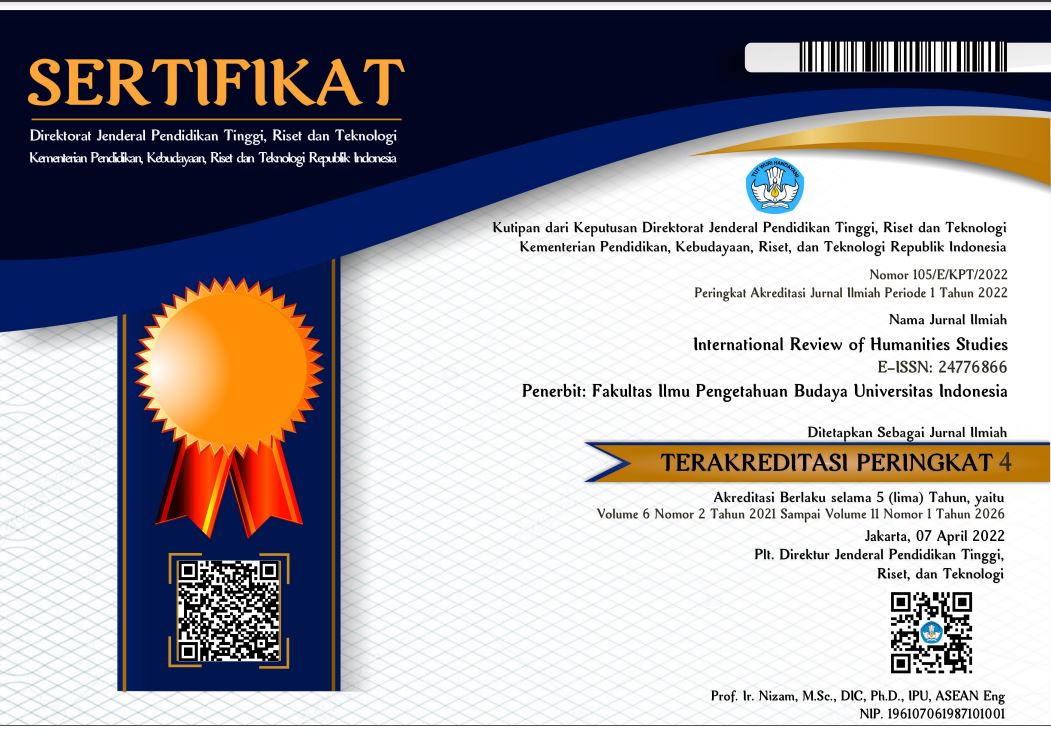International Review of Humanities Studies

Abstract
Youth language is a social dialect language variation that is used by certain age group, has linguistic processes such as significant borrowing, and morphological and semantic manipulation. In Japanese, youth language is called wakamono kotoba (wakamono 'youth', kotoba 'word', 'language'). There seems to be a new phenomenon di Japanese youth language, same word that have contrary meanings. Based on initial observation, in Japanese youth language, the word pien is a word that is used to describe ‘crying’. To approve the word pien has contrary meanings, this study explore the use of pien as a popular word among Japanese young people these days. How is the using of the word pien which has contrary meanings? In structure perspective, does the word pien come in the beginning of utterance or in the end of utterance. According to the data collected from Twitter, there are 2,474 utterances have the word pien in them. This research used the corpus method, with the help of Netlytic, a program that can automatically collect various data from social media. The result shows that the word pien can be used for 'the expression of sadness' and 'the expression of happiness', and is added to increase the emotive intensity of the utterance. For example, kyō gakkō okureta pien ‘I was late for school today pien’, Takahashi-kun yasashii pien ‘Takahashi is so kind pien’. The result also shows that the word pien is more often used at the end of an utterance after (i) verbs, (ii) final particles, (iii) nouns, (iv) adjectives, and (v) copula.
Recommended Citation
Niramaya, Kinanti Kanya and Filia, Filia
(2023)
"NEW PHENOMENA IN JAPANESE YOUTH LANGUAGE: CONTRARY MEANING OF PIEN,"
International Review of Humanities Studies: Vol. 7:
No.
2, Article 12.
DOI: 10.7454/irhs.v7i2.465
Available at:
https://scholarhub.ui.ac.id/irhs/vol7/iss2/12


